IMDEA Networks

Event Category: External Presentation (External Speaker)
Has the Internet delay gotten better or worse?
Delay is a key Internet performance metric and its stability, variation, and abrupt changes have been well studied.
However, little could have been said about the Internet-wide delay distribution. In order to build a representative sample set for the Internet-wide delay distribution, one needs to draw data from a random selection of source hosts to destination hosts and there is no measurement system with access to every AS and subnet of the Internet. In this work we propose to apply the path-stitching algorithm to archival measurement data and reconstruct the past history of Internet delay distribution. The two main advantages of path stitching are that data from existing measurement projects is sufficient to provide accurate estimates and it produces delay estimates between almost any two hosts in the Internet.
Modeling Systems from Logs of their Behavior
Logged messages are invaluable for debugging and diagnosing problems. Unfortunately, many execution logs are inscrutable in their raw form. For example, a production Google system may generate a billion-line log file in a single day. In my talk, I will detail two log-analysis tools that I developed to deal with this problem. These tools infer concise and precise models from large execution logs of sequential and distributed systems. Both tools enable new kinds of program analyses and make logs more useful to developers.
Read more arrow_right_altVehicular Networks for Intelligent Transportation Systems: Overview of the Research activities of the "Grupo de Redes de Computadores (GRC)", Universitat Politècnica de València
Wireless communication for intelligent transportation systems (ITSs) is a promising technology to improve driving safety, reduce traffic congestion and support information services in vehicles. A new era of vehicular networks that include vehicle-to-vehicle (V2V) and vehicle-to-infrastructure (V2I) communications is approaching.
Read more arrow_right_altTraffic Localization for DHT-based BitTorrent networks
BitTorrent is currently the dominant Peer-to-Peer (P2P) protocol for file-sharing applications. BitTorrent is also a nightmare for ISPs due to its network agnostic nature, which is responsible for high network transit costs. The research community has deployed a number of strategies for BitTorrent traffic localization, mostly relying on the communication between the peers and a central server called tracker. However, BitTorrent users have been abandoning the trackers in favor of distributed tracking based upon Distributed Hash Tables (DHTs).
Read more arrow_right_alt
Optical Access Networks
Give the attendees an evolutionary view on the access networks and open perspectives on the potential developments upcoming. It will always keep an eye on the standardization trends and other ecosystem parameters (as regulation, cost and timeline constrains) in order to provide the attendees the background to further perceive some of the upcoming opted solutions and dynamics
Read more arrow_right_altCharacterizing Diverse Link Patterns in Complex Networks
Complex networks, including the Internet, wireless and cellular networks, and on-line social networks, are becoming indispensable parts of our daily lives. These networks arising from a wide range of applications can be represented and studied as graphs, and the underlying link patterns play an important role in understanding and solving problems in such applications. For example, many online social networks, such as Twitter and Google+, can be viewed as directed graphs with uni-directional "following'' relations among users, and the link directions contain crucial information about how users form social communities. In another application, online social networks such as Slashdot and Epinions represent relationships between users as links with positive or negative weights, which correspond to friend and foe relations. These networks are referred to as signed networks, where those signed links generate new challenges in understanding and studying the underlying network properties. In this talk, I present my work on developing theories for studying and characterizing various crucial graph properties, such as the edge directionality in directed graphs and the edge polarity in signed graphs. I do so by emphasizing on applications to detecting stable social communities and understanding social influence propagation patterns on online social networks.
Read more arrow_right_altAchieving Sustainable and Scalable Future Wireless Networks
With an optimistic assumption that a WiFi Access Point (AP) is idle for 50% of the time, an approximate energy waste caused exclusively by WiFi APs worldwide is estimated to be a striking 4.7 Billion KWh/year. Furthermore, many other types of future wireless network devices are expected to spend substantial amounts of energy in their idle listening modes, including wireless sensor and actuator nodes, wireless smart meters, mobile phones, and cellular base stations.
Read more arrow_right_altResearch Labs and Startups - Intimate Lovers or Ships Passing in the Night?
In this talk, I will discuss the complex relationship between the university research lab and the startup community and how it varies in different places. There will be some emphasis on software focused startups as these are quite special in terms of the low capital investment costs required to deliver an initial working product, but the talk will also consider the wider set of high tech startup enterprises, some of which are built on a deep understanding of a problem domain arising from substantial research. The talk will discuss the similarities and differences between the activities and skills of the research lab and the startup.
Read more arrow_right_altEnabling Technologies and Standards for Multi-hop Wireless Networking
The purpose of this seminar is to provide an introduction to state-of-art technologies and standards related to mobile multi-hop wireless networks, as broadly classified into three categories depending on their typical coverage: broadband wireless access (BWA), wireless local area networks (WLAN) and wireless personal area networks (WPAN).
Read more arrow_right_altDiscovering internet load balancing through reordering measurement
Speaker: Iljitsch van Beijnum, Research Assistant, Institute IMDEA Networks
Location: Room 4. 1F03, Telematics Department, Torres Quevedo Building, University Carlos III of Madrid, Avda. Universidad, 30, 28911 Leganes – Madrid
Date: May 25th 2011, 13:00
Organization: NETCOM Research Group (Telematics Department, University Carlos III of Madrid, Spain); Institute IMDEA Networks (Madrid, Spain)
The conference will be conducted in English
Read more arrow_right_alt



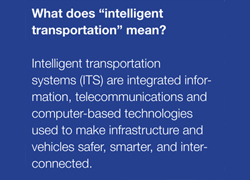
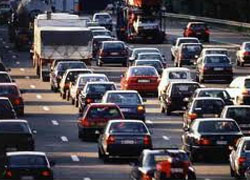


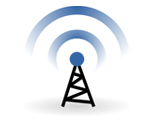

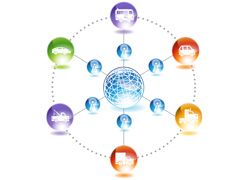
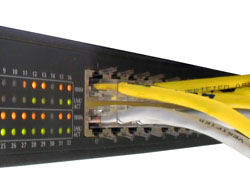
Recent Comments